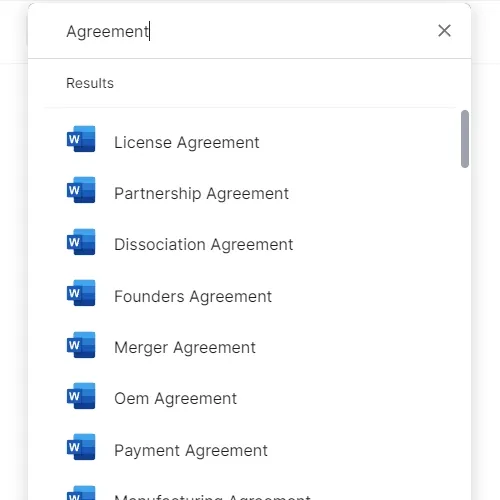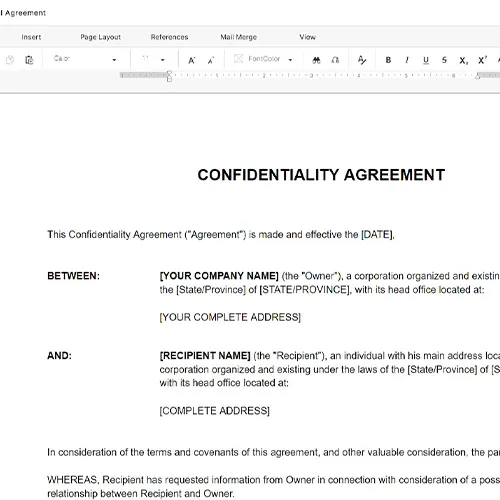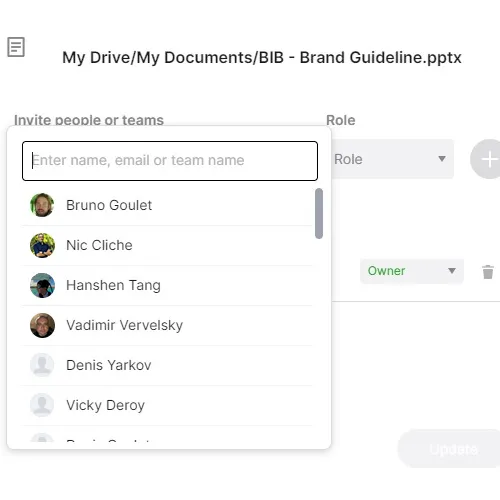Supply Chain Plan Template

Sample of Document Content
This supply chain plan template has 14 pages and is a MS Word file type listed under our production & operations documents.
Supply chain plan template
Supply Chain Plan Your business slogan here. Prepared By: [YOUR NAME] [YOUR JOB TITLE] Phone 555.555.5555 Email info@yourbusiness.com www.yourbusiness.com Table of Contents 1. Executive Summary 3 1.1 Strategic Plan 3 2. Purpose of the Supply Chain Plan 4 2.1 Purpose 4 2.2 Why Do We Need a Plan? 4 3. Supply Chain Plan 5 3.1 Current Supply Pipeline 5 3.2 Inventory Assortment 5 3.3 Demand Forecast 7 3.4 Inventory Buys 7 3.5 Purchase Orders 8 3.6 Tracking Inventory 9 3.7 Inventory Position 10 4. Fulfilling Orders 11 4.1 Order Management System 11 5. Measuring Plan Performance 14 5.1 Indicators 14 1. Executive Summary Supply chain planning is the forward-looking procedure that involves coordinating assets. It focuses on optimizing delivery of goods, services, and accurate information from supplier to customer, in essence: balancing supply and demand appropriately. The purpose of the plan is to streamline operations, avoid delays, enhance efficiency, and lower overall operating costs. With accurate planning, there will be cost reduction relating to several processes, including logistics, making purchases, production, and inventory management in [COMPANY NAME]. For [COMPANY NAME]'s customer satisfaction, supply chain planning helps products become available at the right place at the right time. [COMPANY NAME]'s Supply Chain Plan helps proper synchronization of supply, demand, overall production, and delivery. It also helps cover risks and includes contingency sub-plans for potential points of failure. As a reminder, please find below the main elements of the Supply Chain Plan [202X-202X]. 1.1 Strategic Plan Vision: [WRITE YOUR COMPANY VISION HERE] Mission: [WRITE YOUR COMPANY MISSION HERE] Values: [WRITE IMPORTANT BUSINESS VALUES HERE] Goals: [HIGHLIGHT IMPORTANT GOALS] By going through the Supply Chain Plan, you will be able to see how to decrease costs, improve efficiency, increase output, boost cooperation, and increase profits in [COMPANY NAME]. 2. Purpose of Supply Chain Plan 2.1 Purpose The purpose of [COMPANY NAME]'s Supply Chain Plan is to help reduce costs, improve supply chain efficiency, and boost revenue margins. With the Supply Chain Plan, [COMPANY NAME] can have better visibility into supply chain networks and improve on planning tools. [COMPANY NAME]'s Supply Chain Plan would deal with eliminating delays in the supply chain process. The plan provides individuals with an awareness of their role in [COMPANY NAME] and mitigates problems relating to logistics, late shipments, and production holdups. This Supply Chain Plan covers the year [202X] and is based on high-level strategic objectives set by the company's management. 2.2 Why Do We Need a Plan? A Supply Chain Plan enables the successful synchronization of the supply chain network. In more detail, the plan helps businesses to: Increase net revenue Reduce the margin for supply management errors Improve in-house productivity Provide better B2B networking potential Give better analytic possibilities due to standardization 3. Supply Chain Plan 3.1 Current Supply Pipeline Give a detailed analysis of the supply chain to know how your business has procured goods and services to this point. What worked perfectly during that period? Which companies did the business partner with that led to significant success? 3.2 Inventory Assortment [COMPANY NAME] reviews inventory assortment by taking into consideration major market demands and trends in order to make the appropriate selection of products. The inventory assortment also helps with ordering such products at the optimal level. GOALS Highlight clear goals and objectives. Ensure to prioritize financial objectives during inventory assortment. Timeline Goal #1 Goal #2 Goal #3 Monthly Target Yearly Target HISTORICAL DATA ASSESSMENT Carefully analyze retail analytics and sales trends that provide the business with some necessary benchmarks to consider when planning future merchandise. Fill in the table below. Top Sellers Nature of Product Method of Retail (How and Where) Season of Product Popularity [SELLER #1] [SELLER #2] [SELLER #3] [SELLER #4] CUSTOMER DECISION TREE Draw the customer decision tree to gain insight into how customers review products in the same category. [Ex: Customer Decision Tree] 3.3 Demand Forecast The demand forecast will help [COMPANY NAME] have a significant understanding of the sales of each product. Fill in the table for accurate demand forecast: Period/Month Forecast Actual MAPE (%) January [202X] [Ex: 50,000] [Ex: 100,819] 50 February [202X] [Ex: 50,000] [Ex: 48,883] 2 March [202X] April [202X] May [202X] June [202X] July [202X] August [202X] September [202X] October [202X] November [202X] December [202X] Without a demand forecast, the business may end up buying over or under the appropriate inventory. 3.4 Inventory Buys Translate data from demand forecast into an inventory buy and plan to replenish to ensure there's sufficient inventory for expected demand. Managing inventory appropriately helps businesses avoid stockouts
Reviewed on

Sample of Document Content
This supply chain plan template has 14 pages and is a MS Word file type listed under our production & operations documents.
Sample of our supply chain plan template:
Supply Chain Plan Your business slogan here. Prepared By: [YOUR NAME] [YOUR JOB TITLE] Phone 555.555.5555 Email info@yourbusiness.com www.yourbusiness.com Table of Contents 1. Executive Summary 3 1.1 Strategic Plan 3 2. Purpose of the Supply Chain Plan 4 2.1 Purpose 4 2.2 Why Do We Need a Plan? 4 3. Supply Chain Plan 5 3.1 Current Supply Pipeline 5 3.2 Inventory Assortment 5 3.3 Demand Forecast 7 3.4 Inventory Buys 7 3.5 Purchase Orders 8 3.6 Tracking Inventory 9 3.7 Inventory Position 10 4. Fulfilling Orders 11 4.1 Order Management System 11 5. Measuring Plan Performance 14 5.1 Indicators 14 1. Executive Summary Supply chain planning is the forward-looking procedure that involves coordinating assets. It focuses on optimizing delivery of goods, services, and accurate information from supplier to customer, in essence: balancing supply and demand appropriately. The purpose of the plan is to streamline operations, avoid delays, enhance efficiency, and lower overall operating costs. With accurate planning, there will be cost reduction relating to several processes, including logistics, making purchases, production, and inventory management in [COMPANY NAME]. For [COMPANY NAME]'s customer satisfaction, supply chain planning helps products become available at the right place at the right time. [COMPANY NAME]'s Supply Chain Plan helps proper synchronization of supply, demand, overall production, and delivery. It also helps cover risks and includes contingency sub-plans for potential points of failure. As a reminder, please find below the main elements of the Supply Chain Plan [202X-202X]. 1.1 Strategic Plan Vision: [WRITE YOUR COMPANY VISION HERE] Mission: [WRITE YOUR COMPANY MISSION HERE] Values: [WRITE IMPORTANT BUSINESS VALUES HERE] Goals: [HIGHLIGHT IMPORTANT GOALS] By going through the Supply Chain Plan, you will be able to see how to decrease costs, improve efficiency, increase output, boost cooperation, and increase profits in [COMPANY NAME]. 2. Purpose of Supply Chain Plan 2.1 Purpose The purpose of [COMPANY NAME]'s Supply Chain Plan is to help reduce costs, improve supply chain efficiency, and boost revenue margins. With the Supply Chain Plan, [COMPANY NAME] can have better visibility into supply chain networks and improve on planning tools. [COMPANY NAME]'s Supply Chain Plan would deal with eliminating delays in the supply chain process. The plan provides individuals with an awareness of their role in [COMPANY NAME] and mitigates problems relating to logistics, late shipments, and production holdups. This Supply Chain Plan covers the year [202X] and is based on high-level strategic objectives set by the company's management. 2.2 Why Do We Need a Plan? A Supply Chain Plan enables the successful synchronization of the supply chain network. In more detail, the plan helps businesses to: Increase net revenue Reduce the margin for supply management errors Improve in-house productivity Provide better B2B networking potential Give better analytic possibilities due to standardization 3. Supply Chain Plan 3.1 Current Supply Pipeline Give a detailed analysis of the supply chain to know how your business has procured goods and services to this point. What worked perfectly during that period? Which companies did the business partner with that led to significant success? 3.2 Inventory Assortment [COMPANY NAME] reviews inventory assortment by taking into consideration major market demands and trends in order to make the appropriate selection of products. The inventory assortment also helps with ordering such products at the optimal level. GOALS Highlight clear goals and objectives. Ensure to prioritize financial objectives during inventory assortment. Timeline Goal #1 Goal #2 Goal #3 Monthly Target Yearly Target HISTORICAL DATA ASSESSMENT Carefully analyze retail analytics and sales trends that provide the business with some necessary benchmarks to consider when planning future merchandise. Fill in the table below. Top Sellers Nature of Product Method of Retail (How and Where) Season of Product Popularity [SELLER #1] [SELLER #2] [SELLER #3] [SELLER #4] CUSTOMER DECISION TREE Draw the customer decision tree to gain insight into how customers review products in the same category. [Ex: Customer Decision Tree] 3.3 Demand Forecast The demand forecast will help [COMPANY NAME] have a significant understanding of the sales of each product. Fill in the table for accurate demand forecast: Period/Month Forecast Actual MAPE (%) January [202X] [Ex: 50,000] [Ex: 100,819] 50 February [202X] [Ex: 50,000] [Ex: 48,883] 2 March [202X] April [202X] May [202X] June [202X] July [202X] August [202X] September [202X] October [202X] November [202X] December [202X] Without a demand forecast, the business may end up buying over or under the appropriate inventory. 3.4 Inventory Buys Translate data from demand forecast into an inventory buy and plan to replenish to ensure there's sufficient inventory for expected demand. Managing inventory appropriately helps businesses avoid stockouts
Easily Create Any Business Document You Need in Minutes.

Download or open template
Access over 3,000+ business and legal templates for any business task, project or initiative.

Edit and fill in the blanks
Customize your ready-made business document template and save it in the cloud.

Save, Share, Export, or Sign
Share your files and folders with your team. Create a space of seamless collaboration.


